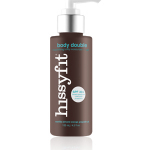The history and even the present-day contexts of toplessness vary extremely widely and are not by any means limited to situations meant to prompt sexual arousal. With that said, most Westernized societies do view exposed female breasts as sexually arousing, and as a result, there are large industries in which toplessness is deliberately used in a manner that exploits that sexual equivocation. Additionally, toplessness in its own right is not the same as exhibitionism, but depending on the context of the toplessness, it may be either intended or taken as such.
In many societies today, it is a cultural norm for females from adolescence onward to cover their breasts, especially the nipples and areolae, in a public place or in front of those with whom they are not in an intimate relationship. The practice is considered an aspect of female modesty. However, attitudes to toplessness have varied considerably across cultures and over time.
The lack of female clothing above the waist was the norm (and not regarded as toplessness) in the traditional cultures of North America, Africa, Australia and the Pacific Islands at least until the arrival of Christian missionaries, and it continues to be the norm and acceptable in many indigenous cultures today. The practice was also the norm in various Asian cultures before Muslim expansion in the 13th and 14th centuries. Upper-class women had been clothed fully, while other women had gone topless in public at most regions of India before the Muslim conquest of India. Female toplessness had been the norm in Southern India in medieval age. Toplessness was the norm for women for several peoples of South India like Tamils along the Coromandel coast, Tiyan and other peoples on the Malabar coast, Kadar of Cochin island, Toda, Nayar, Cheruman (Pulayar), Kuruba, Koraga, Nicobarese, Uriya until the 19th century or early 20th century.
Thai Cultural Mandates issued in 1939 and Western writing prove Thai women would go clothed fully or topless in public before the westernization of dress. In the late 19th century the influence of missionaries and modernization under King Chulalongkorn encouraged local women to wear blouses to cover their breasts. Until the early 20th century, women from northern Thailand wore a long tube-skirt (Pha-Sin), tied high above their waist and below their breasts, which were uncovered.
In 1858 Henri Mouhot took the picture of Laos women in which virgins clothed their breasts, while the married women revealed both breasts in public as the function of breastfeeding was attached to their breasts.
Toplessness had been the norm among Dayak people, Javanese people, Balinese people at Indonesia before being affected by the culture of Islam and the West. In the Javanese and Balinese society, toplessness had been limited to the women to work comfortably or rest. In the Dayak society, only the sagged or big breasted women among the married covered breasts which can disturb them in their work.
In most Middle Eastern countries, toplessness has not been socially accepted since at least the early beginning of Islam (7th century), because of Islamic standards for female modesty. However, toplessness was the norm in earlier cultures within Arabia, Egypt, Assyria and Mesopotamia. Tunisia and Egypt are an exception among Arabic states, allowing foreign tourists to swim topless on private beaches. In Himba society of northern Namibia, the social norm is for women to be bare breasted.
In many societies today, it is a cultural norm for females from adolescence onward to cover their breasts, especially the nipples and areolae, in a public place or in front of those with whom they are not in an intimate relationship. The practice is considered an aspect of female modesty. However, attitudes to toplessness have varied considerably across cultures and over time.
The lack of female clothing above the waist was the norm (and not regarded as toplessness) in the traditional cultures of North America, Africa, Australia and the Pacific Islands at least until the arrival of Christian missionaries, and it continues to be the norm and acceptable in many indigenous cultures today. The practice was also the norm in various Asian cultures before Muslim expansion in the 13th and 14th centuries. Upper-class women had been clothed fully, while other women had gone topless in public at most regions of India before the Muslim conquest of India. Female toplessness had been the norm in Southern India in medieval age. Toplessness was the norm for women for several peoples of South India like Tamils along the Coromandel coast, Tiyan and other peoples on the Malabar coast, Kadar of Cochin island, Toda, Nayar, Cheruman (Pulayar), Kuruba, Koraga, Nicobarese, Uriya until the 19th century or early 20th century.
Thai Cultural Mandates issued in 1939 and Western writing prove Thai women would go clothed fully or topless in public before the westernization of dress. In the late 19th century the influence of missionaries and modernization under King Chulalongkorn encouraged local women to wear blouses to cover their breasts. Until the early 20th century, women from northern Thailand wore a long tube-skirt (Pha-Sin), tied high above their waist and below their breasts, which were uncovered.
 LOOK TWICE: Body double Elise |  Halle Berry\x26#39;s body double |  For Body Try: Hissyfit Body |  Steal Halle Berry\x26#39;s Oscar |  Body double Elise Fernandez |
 as Berry\x26#39;s body double on |  Megan Fox Used Body Double in |  Halle Berry\x26#39;s body double |  beating out Halle Berry. |  When Halle Berry isn\x26#39;t hottie |
In most Middle Eastern countries, toplessness has not been socially accepted since at least the early beginning of Islam (7th century), because of Islamic standards for female modesty. However, toplessness was the norm in earlier cultures within Arabia, Egypt, Assyria and Mesopotamia. Tunisia and Egypt are an exception among Arabic states, allowing foreign tourists to swim topless on private beaches. In Himba society of northern Namibia, the social norm is for women to be bare breasted.
 Bond girls Halle Berry and |  Meow Monday - Halle Berry |  Halle Berry Gotta\x26#39; be the |  Body Doubles Divas in Mens |  Winston Churchill giving his |





No comments:
Post a Comment